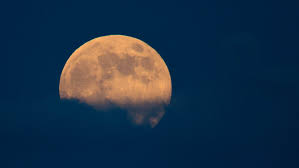Introduction to the Full Moon
The full moon has captivated humanity for centuries, influencing culture, mythology, and even nature. As the moon completes its lunar cycle, it aligns in such a way that its entire illuminated surface is visible from Earth. This natural phenomenon not only fills the night sky with radiant beauty but also plays a significant role in various traditions and events across the world.
Celestial Mechanics of the Full Moon
The full moon occurs roughly every 29.5 days, when the Earth is positioned directly between the sun and the moon. This position allows sunlight to illuminate the moon’s surface fully. Throughout the year, different full moons are referred to by names typically derived from seasonal changes. For example, the January full moon is often called the “Wolf Moon,” a reference to indigenous American traditions.
Full Moon and Cultural Significance
Across different cultures, the full moon has immense significance. In many traditions, it is a time for celebration, reflection, and rituals. In various indigenous tribes, it represents a time for harvesting crops and community gatherings. Additionally, in many spiritual practices, the full moon is regarded as a time for setting intentions and manifesting desires, as its powerful energy is believed to amplify one’s intentions.
Scientific Observations and Tidings
On the scientific side, the full moon affects our planet more than just aesthetically. Its gravitational pull impacts ocean tides, with higher tides occurring during full moons due to the alignment of the Earth, moon, and sun. This phenomenon, known as ‘spring tides,’ plays an essential role in coastal ecosystems and marine life cycles.
Health and Wellbeing Related to the Full Moon
Interestingly, some studies have suggested a correlation between full moon phases and human behaviours, though findings are often controversial. Reports indicate variations in sleep patterns and some anecdotal evidence of increased activity during full moons. However, scientific consensus remains inconclusive on the psychological effects of lunar phases.
Conclusion: Why the Full Moon Matters
The full moon stands as more than a mere astronomical event; it acts as a reflection of the interconnectedness of nature, culture, and science. For many, it serves as a reminder of the cycles of life and the changing seasons, fostering a deeper appreciation for the universe. As the full moon continues to rise in our skies, it connects us all to age-old traditions and the natural world around us, encouraging us to reflect and celebrate.


